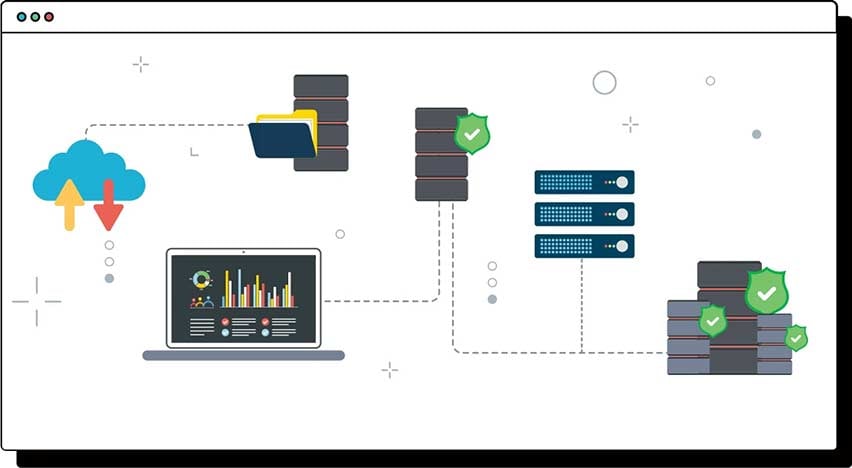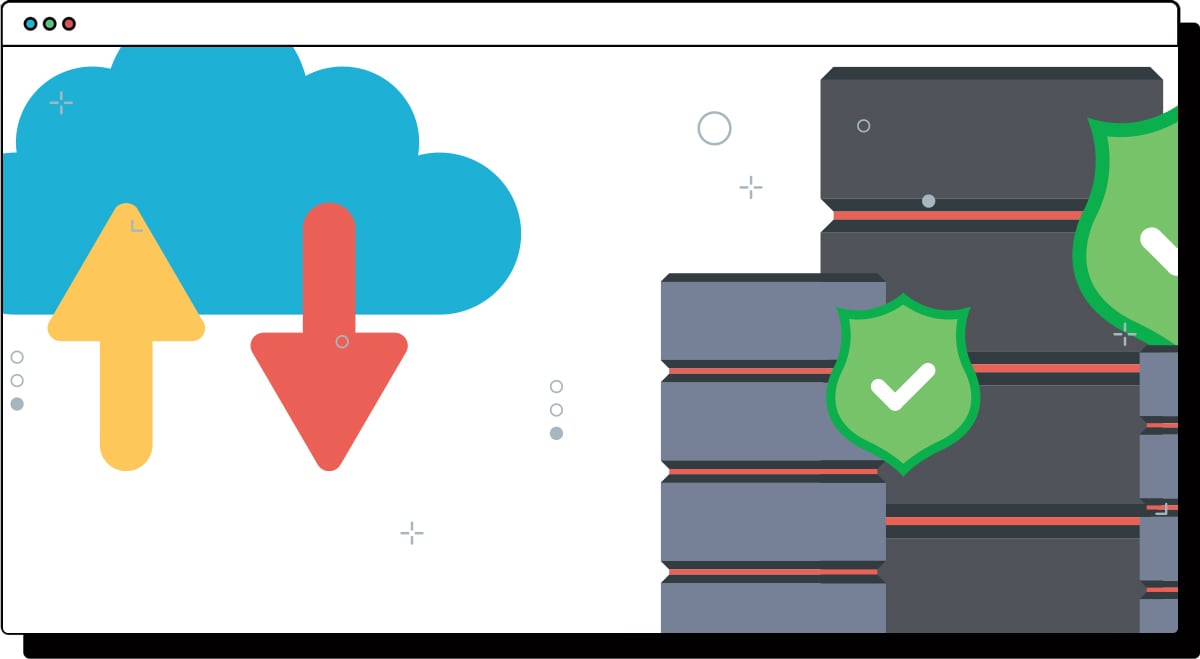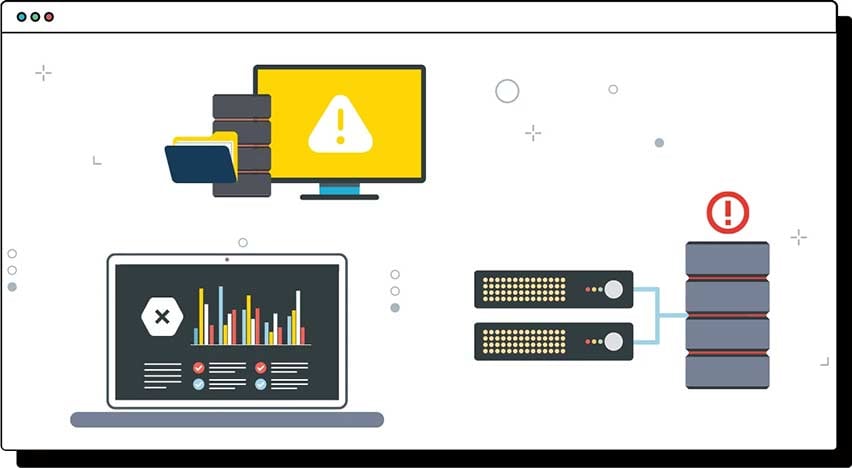In the world of modern business, where data is often hailed as the new gold, it's easy to overlook the systems that store and manage this precious resource. But what if we told you that hidden within the depths of your organisation, there might be barriers that are silently stifling your growth and efficiency?
These barriers, known as data silos and disparate systems, can be the unseen culprits behind many operational challenges. And the most intriguing part? Many businesses aren't aware that they might be grappling with them. In this post, we'll shed light on these two elusive issues, then we’ll help you recognise their signs as well as understand their impact and finally we’ll show you how to solve them.
Let’s start by looking into data silos…
What are Data Silos?
Imagine walking into a vast library, where each book contains valuable information crucial for your business. But instead of a systematic arrangement, the books are scattered, locked away in separate rooms, each with its own key. Accessing the complete information becomes a daunting task, doesn't it? This is the essence of a data silo.
In more technical terms, a data silo is an isolated database or repository, where information is stored separately from other data sources within an organisation. It's like having pockets of information that don't communicate or share with other pockets. These silos often arise unintentionally. They can be the result of departments or teams adopting different systems or software over time, each tailored to their specific needs. While these systems might work perfectly within their individual contexts, the lack of integration and communication between them can lead to a fragmented view of the organisation's overall data.
The problem isn't just the existence of these silos, but the barriers they create. They can hinder the free flow of information, making it challenging to gain a comprehensive understanding of what’s really happening at any given moment within an organisation, and in a world where agility and informed decision-making are paramount, this can prove disastrous.

The Hidden Dangers of Disparate Systems
While data silos are like isolated islands of information, disparate systems are akin to different languages spoken within the same organisation. These are varied IT systems, tools, or software that, while functional in their own right, don't necessarily "speak" to each other or integrate seamlessly.
At first glance, using different systems tailored to specific tasks or departments might seem efficient. After all, specialised tools are designed to cater to very specific business needs.

However, beneath the surface, these disparate systems can pose several challenges:
1. Inefficiency in Data Transfer:
Without integration, data needs to be manually transferred or entered into multiple systems, leading to potential errors and time wastage.
Learn how Prokon seamlessly integrated HubSpot and Xero eliminating the cumbersome manual process of having to export data from HubSpot and then importing it into Xero in order for them to generate invoices.
2. Inconsistent Data:
Since these systems don't communicate, discrepancies can arise. One department's data might not match another's, leading to confusion and misinformed decisions.
3. Increased Complexity:
Training staff on multiple systems can be time-consuming. Moreover, troubleshooting issues becomes more complicated when data is spread across different platforms.
4. Missed Opportunities:
With data scattered across systems, spotting trends, patterns, or insights becomes challenging. This can result in missed opportunities for growth and improvement.
5. Security Concerns:
Managing and ensuring the security of multiple systems can be a daunting task. Each system might have its own vulnerabilities, increasing the risk of data breaches.
The irony here is that these systems, often adopted to improve efficiency or address specific challenges, can end up creating more problems than they solve if not properly integrated. Recognising the pitfalls of disparate systems is crucial for any organisation aiming for streamlined operations and data-driven growth.
Signs You Might Have a Data Silo Problem

Data silos can be sneaky. They often develop gradually, making them hard to recognise until they've become deeply entrenched in an organisation's operations. However, by being vigilant and observant, you can identify some telltale signs that indicate the presence of these hidden barriers:
1. Difficulty Accessing Data:
If teams frequently struggle to find or access the data they need, it's a clear indication that information might be trapped in silos.
2. Inconsistent Information:
Organisations often find themselves having to resort back to the “single source of truth”. This happens when different departments have varying data or reports on the same subject - a real red flag. This inconsistency can lead to confusion and misinformed decisions.
3. Repetitive Data Entry:
If employees find themselves entering the same data into multiple systems or spreadsheets, it's a sign that systems aren't integrated, and data is being siloed.
4. Poor Collaboration:
When departments seem out of sync, or there's a noticeable lack of collaboration and communication regarding data, it's often because silos are preventing the free flow of information.
5. Frustration Among Employees:
Data silos will create friction where the process could be smooth; employees will feel the friction and become understandably frustrated and annoyed. When team members express frustration about the difficulty of sharing or accessing data, or they resort to creating their own "workarounds" to manage information, it's a strong indicator of underlying silo issues.
Recognising these signs early on is crucial. The longer data silos persist, the more deeply they can affect an organisation's efficiency, culture, and bottom line. If any of these signs resonate with your current situation, it might be time to take a closer look and consider solutions.
How to Fix These Issues - Breaking Down the Walls
Addressing the challenge of data silos isn't just about recognising their existence; it's about actively dismantling these barriers to foster a more integrated and collaborative environment.

Here's how you can start breaking down the walls of data silos:
1. Audit Your Data Landscape:
Begin by taking stock of all the data sources and systems in use within your organisation. Understand where data resides, who uses it, and for what purpose.
2. Promote Open Communication:
Encourage departments to communicate openly about their data needs and challenges. This can foster a culture of collaboration and shared responsibility for data management.
3. Invest in Integration Tools:
There are numerous data integration tools available that can help connect disparate systems, allowing them to communicate and share data seamlessly.
4. Standardise Data Formats:
Ensure that data entered into any system adheres to a standardised format. This can reduce discrepancies and make data consolidation easier. Consistent formatting will bring together groups of data once integration is activated and prevent a headache.
5. Provide Training:
Equip your team with the skills and knowledge they need to manage data effectively. This includes training on new systems or tools and fostering a data-driven mindset.
6. Seek Expert Guidance:
Sometimes, the challenges posed by data silos can be complex and deeply rooted. In such cases, seeking guidance from a data integration specialist can provide invaluable insights and tailored solutions.
Remember, breaking down data silos is not a one-time task but an ongoing effort. As your organisation grows and evolves, continuously monitor and adapt your data management strategies to ensure that information flows freely, driving informed decisions and fostering innovation.
Conclusion
In our data-driven age, the way we manage, access, and interpret our data can be the difference between thriving and merely surviving. Data silos and disparate systems can silently erode the foundations of an organisation, leading to inefficiencies, misinformed decisions, and missed opportunities. Recognising the signs and understanding their ripple effects is crucial, but the real power lies in taking proactive steps to break down these barriers.
If any part of this article has resonated with you, I urge you to take a closer look at your own organisation's data management practices. And if you ever feel the need for guidance or a helping hand, remember that solutions are just a call away. Reach out to us, and let's embark on the journey of seamless data integration together.


